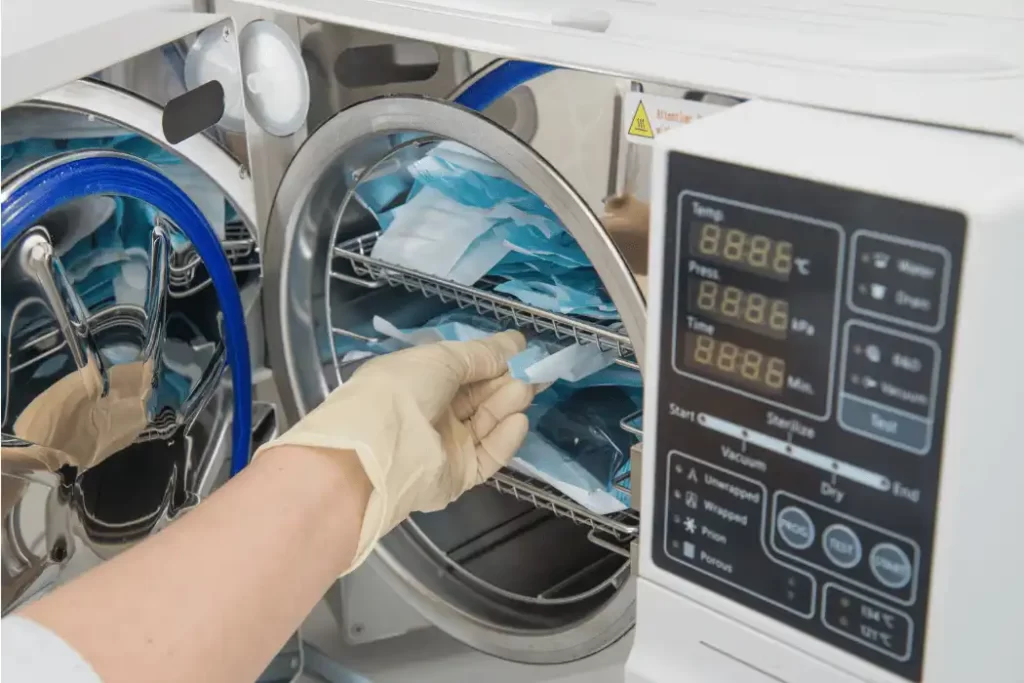Sterilization is a critical process used in various industries, including healthcare, pharmaceuticals, and food production, to eliminate all forms of microorganisms, such as bacteria, viruses, and spores, from equipment, instruments, or substances. The importance of sterilization cannot be overstated, as it ensures the safety and efficacy of medical equipment, pharmaceutical products, and consumables. Among the different methods of sterilization, chemical sterilization stands out for its efficacy and ease of use. The comprehensive overview of Chemical Method of Sterilization acts as a valuable source of knowledge, shedding light on various techniques and applications of chemical agents to ensure effective sterilization.
1. Introduction to Sterilization and its Importance
Sterilization plays a crucial role in preventing the spread of infections and maintaining the quality of products. In medical settings, sterilization is essential to ensure that surgical instruments, medical devices, and equipment are free from any potentially harmful microorganisms. Likewise, in the pharmaceutical industry, sterilization is critical to prevent contamination of drugs and ensure their effectiveness. The food industry also relies on sterilization techniques to preserve food products and protect consumers from foodborne illnesses.

2. Chemical Method of Sterilization: An Overview
2.1 Understanding Chemical Sterilization
Chemical sterilization involves the use of specific chemical agents to kill or inactivate microorganisms on surfaces or objects. Unlike physical sterilization methods like heat or radiation, chemical sterilization can be applied to delicate instruments and materials that may be sensitive to higher temperatures or radiation exposure. This makes it a versatile and widely used method across various industries.
2.2 Common Chemical Agents Used for Sterilization
Several chemical agents are employed in the sterilization process. Each agent has its unique properties, effectiveness, and applications. Some of the commonly used chemical agents for sterilization include:
- Ethylene Oxide: A gas widely used for its broad spectrum of antimicrobial activity.
- Hydrogen Peroxide Vapor: Effective in low-temperature sterilization and is often used in healthcare facilities.
- Peracetic Acid: Known for its rapid action and effectiveness against a wide range of microorganisms.
- Ozone: A powerful oxidizing agent that can be used for water and air sterilization.
- Chlorine Dioxide: Effective in disinfection and sterilization of surfaces and water.
3. Advantages and Disadvantages of Chemical Sterilization
3.1 Advantages
Chemical sterilization offers several advantages, making it a preferred choice in various industries. Some key advantages include:
- Compatibility: Chemical sterilization can be used on a wide range of materials, including plastics, metals, and fabrics.
- Efficiency: It can achieve high-level sterilization and is effective against a broad spectrum of microorganisms.
- Accessibility: Chemical agents are relatively easy to obtain and use.
- Safety: When handled properly, chemical sterilization is generally safe for both equipment and users.
3.2 Disadvantages
However, chemical sterilization also has some limitations and disadvantages, which include:
- Residue: Some chemical agents may leave residue on treated items, requiring additional steps to remove it thoroughly.
- Time-consuming: Certain Chemical Method of Sterilization may have longer processing times compared to other sterilization techniques.
- Toxicity: Some chemical agents can be toxic or harmful to humans and the environment if not used correctly.
4. Chemical Sterilization Techniques and Applications
4.1 Ethylene Oxide Sterilization
Ethylene oxide (EO) is a widely used gas in the sterilization of heat-sensitive medical equipment and devices. It penetrates packaging materials effectively and can destroy various microorganisms, including bacterial spores.
4.2 Hydrogen Peroxide Vapor Sterilization
Hydrogen peroxide vapor (HPV) is commonly used in healthcare facilities for the sterilization of medical instruments and spaces. It is effective at low temperatures and has a short cycle time.
4.3 Peracetic Acid Sterilization
Peracetic acid is a strong oxidizing agent used for the sterilization of equipment, containers, and surfaces. It is fast-acting and leaves no harmful residues.
4.4 Ozone Sterilization
Ozone is a powerful disinfectant and sterilizing agent used for water and air purification. It effectively eliminates microorganisms and organic matter.
4.5 Chlorine Dioxide Sterilization
Chlorine dioxide is used for surface disinfection and water treatment. It is an efficient bactericide and virucide.
5. Safety Considerations in Chemical Sterilization
5.1 Occupational Safety
Workers involved in chemical sterilization must follow strict safety protocols. Personal protective equipment, proper ventilation, and training are essential to minimize the risk of exposure to hazardous chemicals.
5.2 Environmental Impact
Certain Chemical Method of Sterilization, such as EO, have environmental implications due to their potential to release harmful emissions. It is essential to use these methods responsibly and adhere to environmental regulations.
6. Comparison with Other Sterilization Methods
6.1 Heat Sterilization
Heat sterilization, including autoclaving, is effective and widely used but may not be suitable for heat-sensitive materials.
6.2 Radiation Sterilization
Radiation sterilization uses ionizing radiation to kill microorganisms. It is suitable for disposable medical products but requires specialized facilities.
6.3 Filtration Sterilization
Filtration can be used for heat-sensitive liquids, but it may not be effective against all types of microorganisms.
7. Future Trends in Chemical Sterilization
As technology advances, Chemical Method of Sterilization are likely to become more efficient, safer, and environmentally friendly. The development of new chemical agents and improved application techniques may revolutionize the field of sterilization.
Conclusion
Chemical sterilization is a valuable and effective method for ensuring the safety and quality of equipment, products, and environments. Its versatility, compatibility with various materials, and broad spectrum of antimicrobial activity make it a popular choice in multiple industries. However, careful attention must be paid to safety protocols and environmental impact to ensure responsible and sustainable use of Chemical Method of Sterilization.


